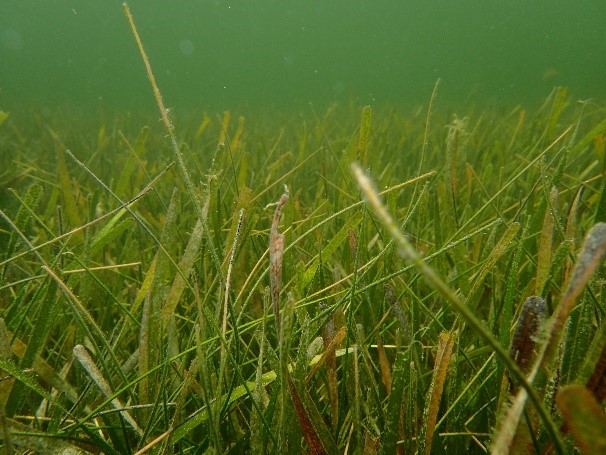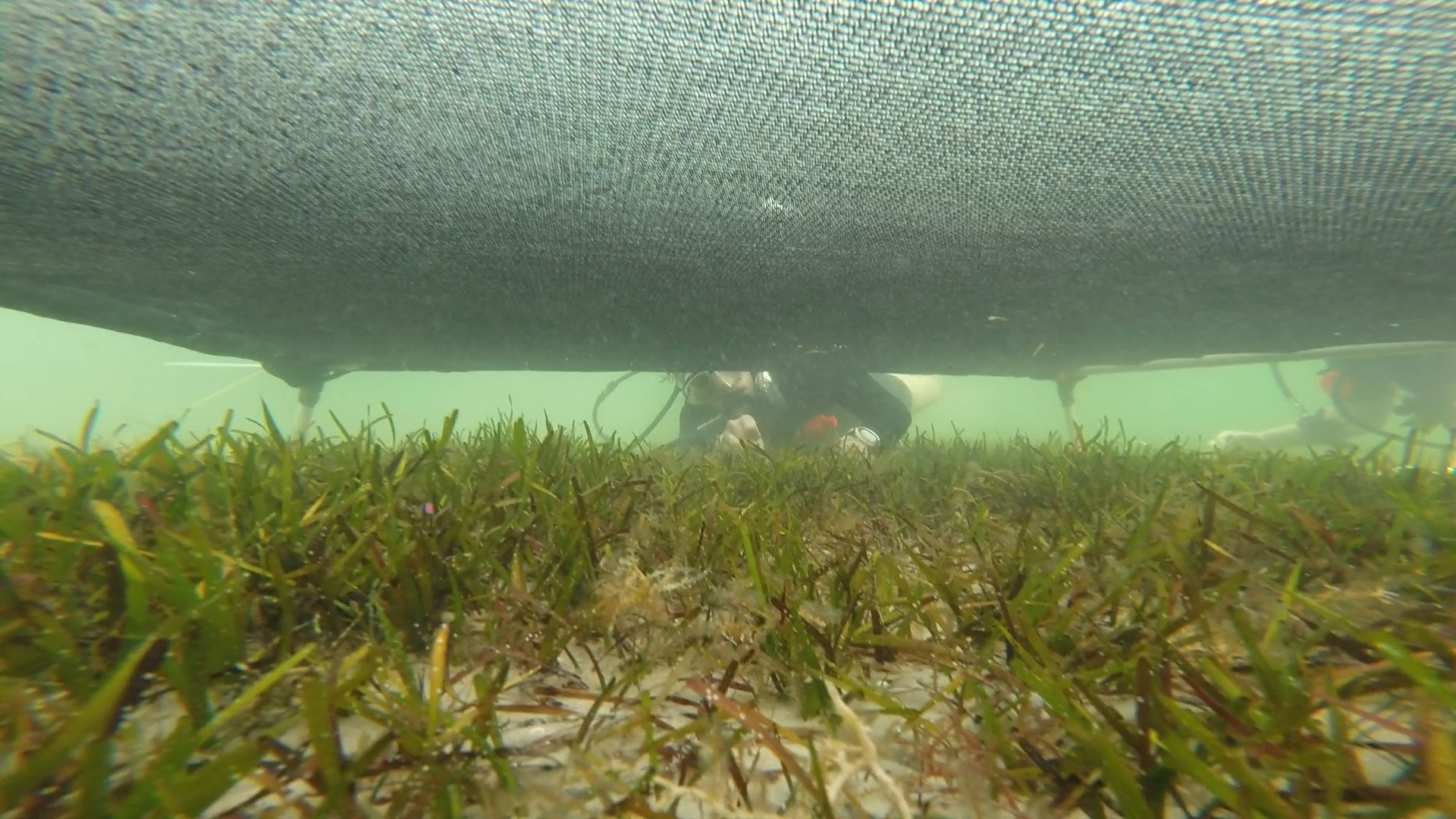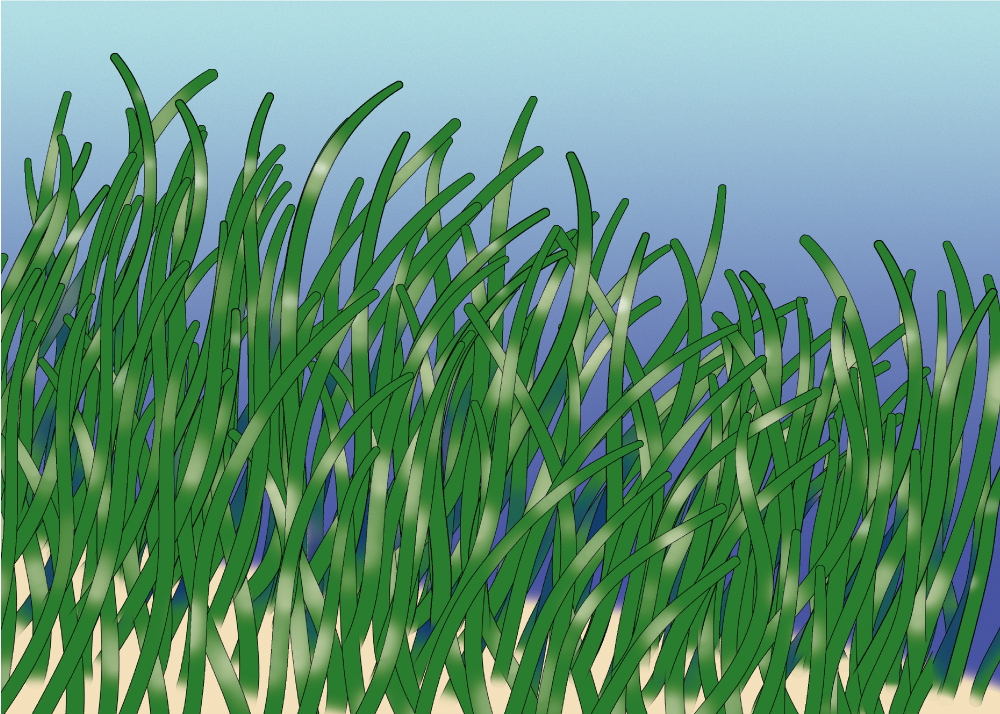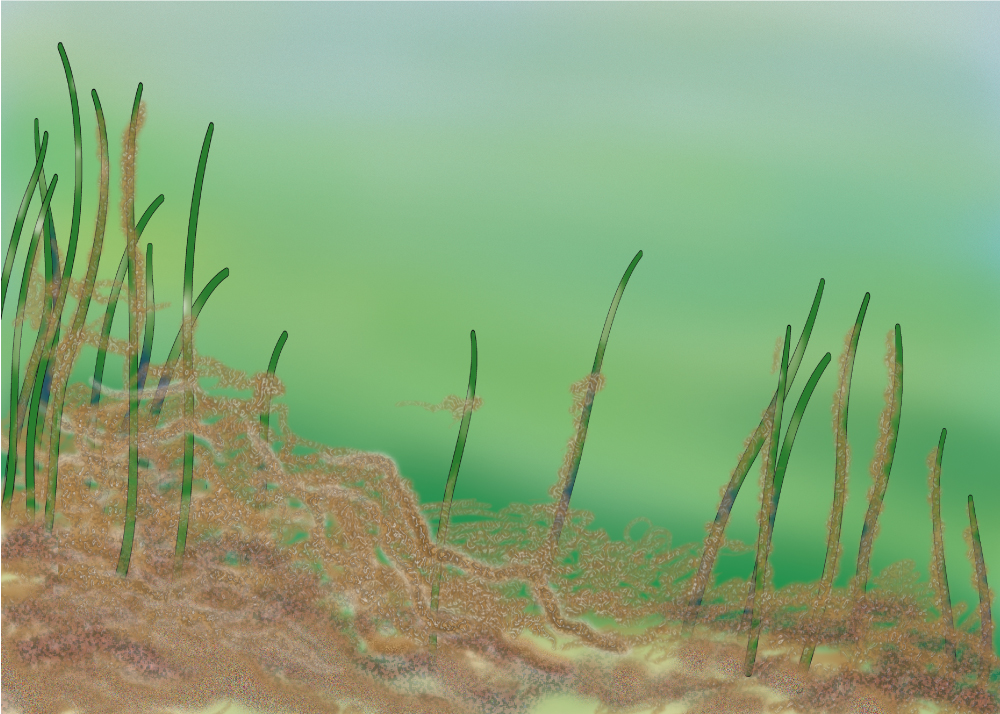 Seagrass in the Nature Coast
Seagrass in the Nature Coast
Seagrasses are flowering, marine plants with fully developed leaves, roots, and rhizomes. Seagrasses support many valuable ecosystem functions such as improving water clarity and providing habitat. Along Florida’s Nature Coast, the size and shape (called “morphology”) of the dominant seagrass, turtle grass (Thalassia testudinum), varies from south to north (Weeki Wachee to Waccasassa). Turtle grass leaves are very short and skinny in Weeki Wachee and gradually become taller and wider in Waccasassa. You may have noticed this phenomenon yourself if you have ever visited coastal seagrass meadows in this region. Previous research showed that the change in morphology was related to changes in concentrations of a key plant nutrient (phosphorus) in the water column. While this was an interesting finding in and of itself, it led us to wonder if a change in morphology might have consequences for seagrass. Specifically, we wondered if turtle grass with different morphologies would have equal ability to survive a disturbance (negative event), such as a period of low light (shading). The ability to survive through and recover from a disturbance is called “resilience” by ecologists.
 A Field Experiment
A Field Experiment
So, in order to answer our question, we carried out an experiment. We wanted to know if leaf morphology influenced seagrass resilience so did an 8- week, comparative shading experiment in three seagrass meadows that had different morphology (Weeki Wachee, Homosassa, and Waccassassa). We used PVC to create six, 1.5-m2 plots in 9 different sites. Half of the plots were shaded with garden cloth and the other half were unshaded controls. During the experiment, we monitored seagrass growth and other indicators of plant condition. After the 8 weeks, we found clear differences in the ability of seagrasses with different morphology to resist and recover from shading disturbance. Turtle grass shoots in Waccasassa (tallest and widest) suffered the worst impacts from the shading while shoots in Homosassa (medium height and width) did the best of the three areas. In other words, turtle grass in Waccasassa was the least resilient to shading while turtle grass in Homosassa was the most resilient.
 Applying the Results
Applying the Results
These results suggest turtle grass adapts to local conditions so that it can grow and survive the best. But, these adaptations affect the ability to respond to disturbances such as short-term reductions in light availability. This is important in terms of managing our valuable coastal resources. Seagrass thrives in low nutrient environments, and it is generally accepted that nutrient inputs and degradation in water quality should be limited wherever possible. However, limited resources may not allow the equal  protection of all seagrass meadows. And, it is often desirable to prioritize areas for restoration or protection. Our work suggests that morphology could be a useful metric for prioritizing management goals by helping to distinguish meadows that may be at risk of extirpation if light is reduced from those that should have higher resilience. In addition, morphology could be monitored in seagrass beds of interest to provide an early warning of light stress.
protection of all seagrass meadows. And, it is often desirable to prioritize areas for restoration or protection. Our work suggests that morphology could be a useful metric for prioritizing management goals by helping to distinguish meadows that may be at risk of extirpation if light is reduced from those that should have higher resilience. In addition, morphology could be monitored in seagrass beds of interest to provide an early warning of light stress.
The full, open access research article can be found here: https://aslopubs.onlinelibrary.wiley.com/doi/abs/10.1002/lno.10810
Citation: Barry, S.C., C.A. Jacoby, and T.K. Frazer. 2018. Resilience to shading influenced by differential allocation of biomass in Thalassia testudinum. Limnology and Oceanography advance online copy. doi: 10.1002/lno.10810
 0
0
